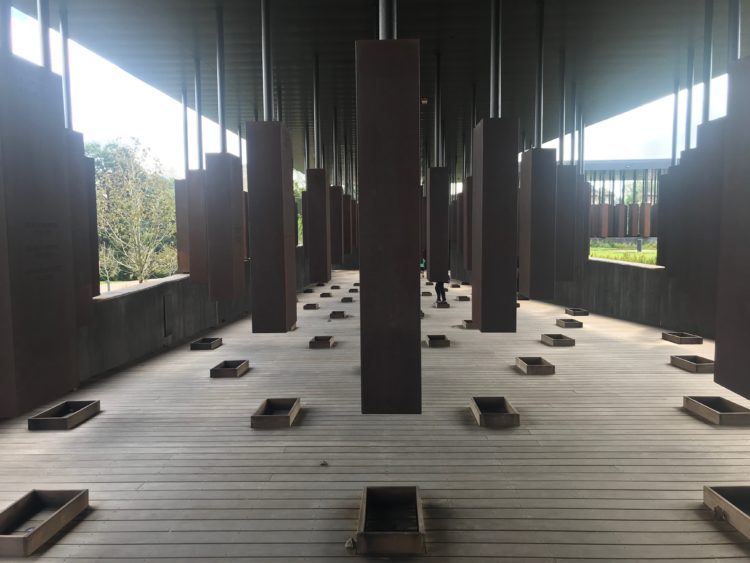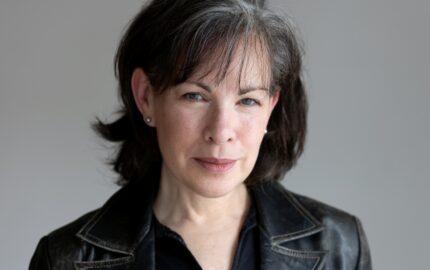EDITOR'S NOTE: Four hundred years ago, a Portugueses ship landed at a port in Virginia. Its cargo was "20 and odd" humans — the survivors of a horrendous crossing from Angola to the New World, and the first Africans to be sold as slaves in what would become the United States. It is hardly an anniversary to be celebrated, but it is certainly one to be remembered and studied. That's what many news organizations are doing — notably among them, the "1619" project in The New York Times, and "1619: Searching for Answers," the capstone of a year-long project in USA Today. We will return to those, and likely others, with more depth in coming weeks, but today we reprise a Storyboard piece about the Legacy Museum in Montgomery, Alabama, and a writer's journey to see the story of slavery through the eyes of those who lived it.
One day last October, Cara Solomon sat alone in an empty field in Alabama, the unmarked site of a lynching. She wasn’t carrying a reporter’s notebook or thinking yet about how she might write about this place. She was just trying to be still, imagine, and feel the gravity of what had happened here. This is how she eventually described that moment:
On a blue-sky autumn day in Alabama, you sit in a field, your head tilted to the trees. You are wondering if they stood here 81 years ago, when Wes Johnson was hanged from the limb of another tree, very near where you sit. Did he look across this county road and see the grace of those branches, hold onto it, with the mob in motion below?
A Bostonian, Solomon had flown to Montgomery to do a story for the Harvard Law Bulletin. Her assignment: Profile a new museum and memorial honoring the 4,400 African-Americans known to have been lynched in the United States, and the thousands more who were trafficked and enslaved. The memorial includes a haunting hall of iron beams hanging from the rafters, and the museum has a freestanding wall of jars filled with earth dug from places people died.
Throughout her 22-year career, Solomon had shifted between a number of storytelling roles, from newspaper reporter to magazine editor to founder of a non-profit that uses stories to bridge divides and foster community. Solomon began her career as an editor for The Big Issue, a street paper produced by professional journalists and sold by homeless people, who earn an income as vendors. She then worked as a reporter for the Hartford Courant and The Seattle Times. Most recently, she spent eight years as communication manager for the Human Rights Program at Harvard Law School.
Last summer she left Harvard to focus on her nonprofit, Everyday Boston, which started as a passion project in 2015 and blossomed into a calling. It puts professional journalists in the supporting role; rather than determine and frame the story, they train members of the community as “story ambassadors” so they can find, collect and share the stories of their neighbors. “We teach people of all ages how to connect across the dividing lines of the city by reaching out for each other’s stories,” Solomon says.
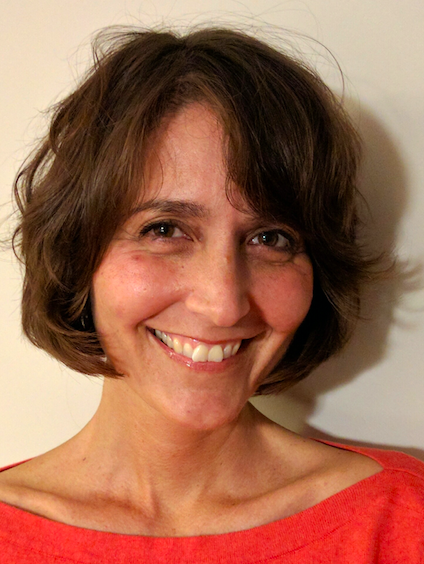
For Solomon, the role and identity as a journalist had always chafed a bit. She’d seen how the media could perpetuate stereotypes, and the damage that could do. “I'd heard concerns for years from people of color in particular about how the media was representing — or not representing — their communities,” she says. “And how that was affecting the way others saw them, and how young people in particular saw themselves.”
Her approach to storytelling relies on the tools of journalism, but uses them in a different way — “not necessarily to inform people, but to connect people,” Solomon says. “It’s not about civic journalism; it’s about community building.”
Running a nonprofit, however, didn’t leave a lot of time for her own writing. Then the editor from Harvard Law Bulletin offered her a compelling assignment: Write about the new Legacy Museum and National Memorial for Peace and Justice in Montgomery, Alabama, which was the vision of Harvard Law School alum Bryan Stevenson, who is executive director of the Equal Justice Initiative.
Since opening in April 2018, the sites had been featured in some of the nation’s top publications. Solomon, who says she suffers the same insecurity most writers do, wondered: What could she possibly add? Her second thought: Could she use a different approach — the one that felt more true to her and that was guiding Everyday Boston — to find another way to tell this story? Could she write a story not as much about the alum who built a museum, but about the people he built it for?
In Bringing Slavery’s Legacy to Light, One Story at a Time, Solomon pivoted from the exhibits to face the people whose lives intersected with the museum. She spoke with Storyboard about how she did that, and why. Our conversation has been edited for length and clarity.
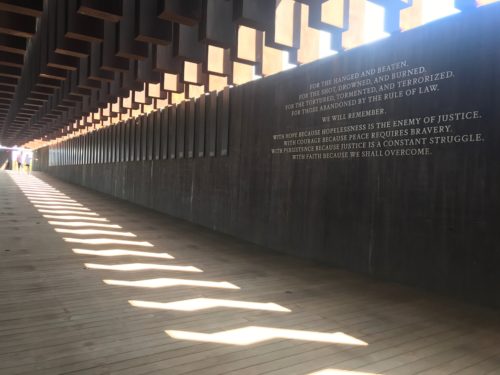
Alot of writers might have taken the obvious approach: an article about a museum. Your take is decidedly different — a narrative about a narrative. It’s a story about the power of personal stories. How did you come up with this angle?
It’s the way I see the world. To the extent that I think about justice or any theme I care deeply about, I think about it in terms of people’s stories. Individual stories. I start with the story of an individual and what it says about a theme or a country or the world we live in. I start from the ground up.
I wasn’t capable of doing a piece about the nature of race relations in America and where the museum fits into that. My strength is in writing about everyday people. When the editor offered me the story, I said I would consider it, but only if I could do it through the lens of people who live in Alabama whose lives answered the question of why this museum was needed. I wanted to highlight more of the “why” than the “what.” Why is there a need for this kind of education and reckoning? Obviously, the museum and the memorial describe it in painful and powerful terms. But until you visit and experience it first-hand, you may not process the power and need for it all.
Stories are the connective tissue between humans. Always have been. Always will be. Facts and statistics are critical. But stories, to me, are the key. When they're well told, they make you feel in ways that inspire understanding, and ultimately — hopefully — change. That's what I was after.
Most of the stories about The Legacy Museum have starred its founder, Bryan Stevenson. In your story, Stevenson was present, but not the center of the piece. Who did you choose as central characters, and why?
Bryan Stevenson is not so much a character as a narrator in my piece. The main characters are two men who animate, in my mind, the reason the museum is so important. It seemed important to me to give their stories more oxygen.
Anthony Ray Hinton spent 28 years on death row — 30 years in prison total — for two murders he didn’t commit. When he told the arresting officer he was innocent, the officer told him that didn’t matter because he was black, and the jury and judge would be white. Even after Stevenson presented exonerating evidence on Ray’s behalf, it took 16 more years for him to be released. His story is an example of how, as Stevenson says, slavery never ended; it just evolved.
Ray is now a community educator with EJI and the author of a book, “The Sun Does Shine,” which I think should be required reading for every American. But there’s more to Ray than these things. There’s the man he was before all this happened to him, which in pretty significant ways is still the man he is today. I wanted readers to also get to know him a bit.
And then there’s James Johnson, an educator who returned to the South after being pushed out for his attempts to integrate a café in Abbeville, Alabama. Another amazing man. He became a teacher at the high school that was whites-only when he left. He went on to create the school’s black history program and, at the request of both white and black students, he helped them integrate their prom. James’ cousin Wes was lynched in the field where the article begins. He still has a hard time passing that field today, imagining what it must have been like for his teenaged cousin in the moments before the mob shot and hanged him. The soil James collected in Wes’ memory sits in a jar in the Legacy Museum.
I wanted to understand who these men were beyond the isolated quote or the very tight lens of justice. Their stories help to explain why the museum and the memorial are so critical. They highlight the horror of the past, but importantly, they also highlight the strength and wisdom of the people who endured it, and who keep pushing forward for something better.
Your story begins with a scene not in the museum, but 100 miles from it, in an unmarked field where a man named Wesley Johnson was lynched in 1937. A white man pulls up in a pickup truck and asks you why you’re there. Why did you choose to begin this way?
I think there were a lot of things going through my mind. I was strangely a little bit afraid; I don’t quite know why. Maybe it was because I was a woman alone in a field with no one else in sight. Maybe it was because I was a Northerner in a rental car reporting on a very Southern story. Maybe because I was steeped in the history of what had happened in that field and that town, and I was thinking about all those things. And maybe it was because, though I had zero reason to think that man was anything other than accepting of everyone, in that moment, I was relieved I was white. I founded Everyday Boston, an organization that works to break down stereotypes, and I myself was sitting in that field with a raft of my own stereotypes. It was a very powerful experience for me.
Why did you choose to write that scene in second person?
To be honest, I was tempted to open with someone else’s experience visiting the site of a lynching and filling a jar with soil for the museum. I didn’t know if writing it in second person would work. Was it too much about me? It felt like a risk. But at the same time, I thought, it would be insane to leave this scene out. The fact that the man in the truck didn’t know that a lynching had taken place there, when he seemed to be from the area, said everything about the need for the museum, the memorial, and other ways to acknowledge and reckon with the past.
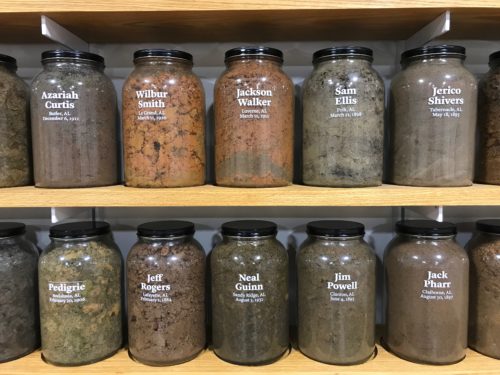
Bryan Stevenson had told me a very powerful story about an African American woman who was collecting soil when an older white man drove up and, similarly to my experience, asked the question of what she was doing. He said the woman was nervous about telling him the truth, but that she told him anyway. And that he went on to ask if he could join her in digging the soil.
But ultimately, I was swayed by the exchange I had with the man in the truck — and the fact that he said aloud that he didn’t know. It seemed like a better idea to explore my own experience — of two strangers feeling their way through a tense moment where the past collided with the present — rather than try to recreate someone else’s experience third-hand.
Coming to Alabama from Boston, did you feel like an outsider or did people treat you as one? Was that a divide you had to cross?
I don’t think it was particularly pronounced, that sense of being a Northerner in the South. I didn’t sense it from the African-American people I talked to. There was more trepidation, more head tilting, from white people. I felt I had to work harder to show that I was not there to judge them. That could have been real, or it could have been imagined on my part.
I was surprised at the sense of “us and them” I got from some white Alabamians. It wasn’t necessarily “us versus them,” but “us and them.” James Johnson, who had lived in the North, said something along the lines of how in the South black people were hated hated as a race, but lived side-by-side with whites; in the North they were more loved as a race, but people didn’t interact across races.
I personally struggled more with being back in the role of a traditional journalist. It was an obstacle. There is a real distrust, even by people who appreciate the role of the media. People are anxious and watch their words around you. That was very jarring to me, and it stung a bit. In the work I do now for Everyday Boston, I use stories to connect people. I worked hard, as I always do, to connect with people and try to understand who they are. It takes a while for people to see you as a fellow person.
You illustrate the context of the museum with examples not only of what exists in Alabama’s cultural and historical landscape, but more subtly, what’s NOT there. Before this museum, the region — which has dozens of Confederate monuments — had almost nothing that acknowledged the legacy of slavery. How did you become aware of voids like this, the things that aren’t there, but should be?
I’m naturally tuned into who is on the sidelines. I think that comes from being sidelined myself at a young age with illness. When I was 19 I had cancer. I understand what it’s like to be on the other end of a very pat media narrative about that experience.
We’ve all been on the other end of stereotypes. Some are annoying. Others are life-threatening. Mine were not life-threatening, but they did some serious damage to me as a young person. It was formative. So stories of people living on the sidelines, those were the stories I went into journalism to tell — the ones I identified with and thought were not getting enough air time. Not only for the sake of the individuals who experience that, but for the sake of society’s understanding of who lives among us. My definition of news is not about what happened yesterday today or tomorrow. I’m interested in who we are as people and how we live.
Your story suggests that stereotypes can be an insidious form of narrative. There’s a great paragraph about “the narrative of racial difference,” that time-travels, almost ghost-like, from slavery to segregation to a wrongly convicted man sitting on death row:
No matter how much bias he exposed, there was a narrative of racial difference at work — in the courts, and in American life — and it was terrorizing black people.
It had traveled down the years from slavery, inspiring a white mob in 1937 to lynch Wes Johnson for a relationship with a white woman; pushing his cousin James out of Alabama in 1965 for integrating a cafe; encouraging an all-white jury to condemn Anthony Ray Hinton to death in 1986 for a crime he didn’t commit.
How did you arrive at this metaphor?
In my own work with Everyday Boston, I often think of stereotypes like some kind of virus traveling through society. They spread fast, burrow down deep, and become invisible until they show themselves in the worst kind of way. When I heard (museum founder) Bryan Stevenson talk about the power and sweep of this myth of racial difference, it felt similar to me. But instead of a virus, it seemed like some kind of ghost. So I wanted to use language that suggested this narrative had taken on a life of its own, and was egging people on, in ways they themselves did not always recognize, to become the worst they could be.
Are there other sources of inspiration that have changed how you think about storytelling?
One of my role models is Bruce Davidson, a photojournalist who spent a year documenting life on one block in East Harlem. He made a print of each person he photographed and gave it to that person. There's a history in photojournalism of this type of thing, of giving the art back to the community. Or of using the tools of your trade to benefit the community in a very concrete way, as with projects like Shooting Back, where a photojournalist taught homeless young people how to document their surroundings with a camera. I've always wondered why this tradition never made it more widely into the ranks of reporters. (If it has, I haven't heard about it.) We, too, have tools that others might find helpful to document, explore, and ultimately push for change in their worlds.
Do you still see yourself as a journalist? Or as a different kind of storyteller?
I’m out of journalism formally, but I will always be seen as a journalist by non-journalists. And I do see myself as a journalist because I see the world through stories. I love to report. Talking to strangers — I love that piece of it. To seek out someone else’s story, to really listen, and to share that story with the wider world — that is such a precious and empowering responsibility. I just believe that responsibility belongs not only to journalists, but to everyone.
